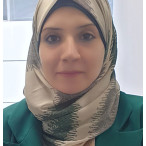Human skin is the largest multifunctional organ of the human body. Its main function is protecting the human body from viruses, bacteria, dehydration (by maintaining water balance), and ultraviolet radiation damage [1]. During the cycle of life, human skin is affected by many factors such as the age, the environment, the interaction with different types of radiation, genetic defects, dehydration, and accidents. These factors might cause diseases, temporal skin conditions, and permanent disorders. In response to this, the skin presents signatures, which can be measured using non-contact millimeter wave sensors that could quantify the dehydration level and the degree of the damage. As an imaging sensor, radiometry can deliver spatial resolutions down to around half of the wavelength of the radiation used, which can be ~1.0 mm. This property enables highly localized, non-contact measurements to be made just below the skin surface in tens of seconds. A convenient metric to describe the condition of human skin is the emissivity, this being defined as the ratio of the level of thermal electromagnetic radiation to the thermal blackbody radiation for a source at the same thermodynamic temperature [2, 3]. The increasing costs of healthcare and the ageing population are two of the major challenges facing the world. This research is aiming to assess the feasibility of using radiometry as a non-contact sensor for early detection of skin conditions and dehydration without necessity of being in healthcare center and without the need of healthcare professionals.
Research team members
How can we help you?
Connect with us
Contact us directly through the contact information below







